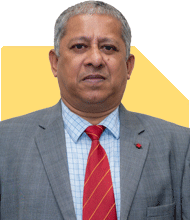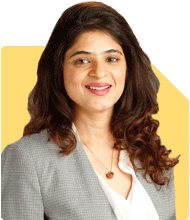Ramalingam Kalirajan |8459 Answers |Ask -Follow
Mutual Funds, Financial Planning Expert - Answered on May 15, 2024
He has an MBA in finance from the University of Madras and is a certified financial planner.
He is the director and chief financial planner at Holistic Investment, a Chennai-based firm that offers financial planning and wealth management advice.... more

I am 25 earning 60 k per alomg with 5k worth of company stocks each month. Already married and wife is earning and independent. Want to buy a car and house as soon as possible without taking a loan. What to do? Currently i am investing 20k per month.
Congratulations on taking proactive steps towards your financial goals at such a young age! Let's craft a plan to help you buy a car and house without taking a loan, leveraging your current income and investments effectively.
1. Define Your Goals
Clarify your objectives for buying a car and house, including timelines and desired outcomes. Understanding your goals will guide your financial decisions and help prioritize your actions.
2. Assess Your Financial Situation
Evaluate your current income, expenses, and existing investments to determine your financial capacity for purchasing assets. Consider your monthly savings, company stocks, and any other assets you may have.
3. Budgeting and Saving
Create a detailed budget to track your expenses and identify areas where you can reduce discretionary spending. Maximize your monthly savings by cutting unnecessary expenses and directing those funds towards your car and house funds.
4. Increase Investment Contributions
Given your age and income, consider increasing your monthly investment contributions to accelerate your savings for the car and house. Allocate a portion of your 20k monthly investment towards short-term goals, ensuring liquidity for upcoming expenses.
5. Utilize Windfalls and Bonuses
Any windfalls or bonuses you receive should be allocated towards your car and house funds. This includes annual bonuses, tax refunds, or any unexpected income. Utilize these funds wisely to expedite your savings progress.
6. Reevaluate Company Stock Strategy
Continue investing in company stocks, but reassess your strategy to ensure diversification and mitigate risk. Consider periodically liquidating some stocks to fund your short-term goals, while maintaining a balanced portfolio for long-term growth.
7. Explore Additional Income Streams
Consider exploring additional income streams to boost your savings rate further. This could include freelance work, part-time gigs, or passive income opportunities. Every additional rupee earned contributes to your goal attainment.
8. Prioritize Your Purchases
Evaluate whether purchasing a car or a house should take precedence based on your priorities and timelines. Consider factors such as transportation needs, housing market conditions, and long-term financial implications before making a decision.
9. Stay Disciplined and Patient
Achieving significant financial goals like buying a car and house without taking a loan requires discipline and patience. Stay committed to your budget, savings plan, and investment strategy, knowing that your efforts will pay off in the long run.
10. Seek Financial Guidance
Consider consulting with a Certified Financial Planner to fine-tune your financial plan and receive personalized advice tailored to your goals and circumstances. A professional advisor can provide valuable insights and strategies to help you achieve your objectives efficiently.
With careful planning, diligent saving, and strategic investing, you can realize your dreams of owning a car and house without relying on loans. Stay focused on your goals, and you'll soon enjoy the satisfaction of achieving them on your terms.
Best Regards,
K. Ramalingam, MBA, CFP,
Chief Financial Planner,
www.holisticinvestment.in
You may like to see similar questions and answers below
Ramalingam Kalirajan |8459 Answers |Ask -Follow
Mutual Funds, Financial Planning Expert - Answered on May 14, 2024
Ramalingam Kalirajan |8459 Answers |Ask -Follow
Mutual Funds, Financial Planning Expert - Answered on Jul 17, 2024
Ramalingam Kalirajan |8459 Answers |Ask -Follow
Mutual Funds, Financial Planning Expert - Answered on Jul 22, 2024
Ramalingam Kalirajan |8459 Answers |Ask -Follow
Mutual Funds, Financial Planning Expert - Answered on Feb 06, 2025
Dr Nagarajan J S K |406 Answers |Ask -Follow
NEET, Medical, Pharmacy Careers - Answered on May 16, 2025

Based on my understanding, no one usually requests a birth certificate at this age. Your inquiry relates to the period before and after independence. In those days, they would accept the SSLC book if you didn't have a birth certificate. However, I am not sure if that was the case during your time.
Instead, you can present your Aadhaar card, which likely includes your original date of birth. You can utilize that information.
If my response doesn't fully address your concerns, I recommend consulting a Notary Public for further assistance.
BEST WISHES.
THANK YOU SIR.
with regards
Prof Suvasish Mukhopadhyay |651 Answers |Ask -Follow
Career Counsellor - Answered on May 16, 2025
Prof Suvasish Mukhopadhyay |651 Answers |Ask -Follow
Career Counsellor - Answered on May 16, 2025
Radheshyam Zanwar |1634 Answers |Ask -Follow
MHT-CET, IIT-JEE, NEET-UG Expert - Answered on May 16, 2025
Radheshyam Zanwar |1634 Answers |Ask -Follow
MHT-CET, IIT-JEE, NEET-UG Expert - Answered on May 16, 2025
Ashwini Dasgupta |107 Answers |Ask -Follow
Personality Development Expert, Career Coach - Answered on May 16, 2025
Ramalingam Kalirajan |8459 Answers |Ask -Follow
Mutual Funds, Financial Planning Expert - Answered on May 16, 2025
Ramalingam Kalirajan |8459 Answers |Ask -Follow
Mutual Funds, Financial Planning Expert - Answered on May 16, 2025
Milind Vadjikar |1236 Answers |Ask -Follow
Insurance, Stocks, MF, PF Expert - Answered on May 16, 2025
Milind Vadjikar |1236 Answers |Ask -Follow
Insurance, Stocks, MF, PF Expert - Answered on May 16, 2025
























